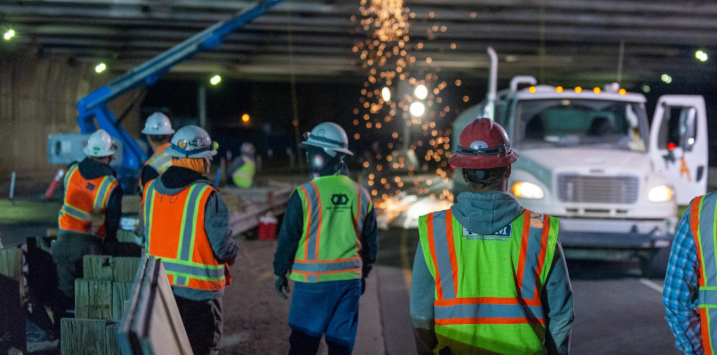
Emerging signs of a deepening construction slowdown
Keeping an eye on the condition of the U.S. economy is necessary for international equity investing, as changes will ultimately influence whether rates are cut. One recent data point suggests another sector of the economy there is slowing.
America’s housing construction downturn is officially deepening, with new government data and anecdotal commentary from the building sector indicating an industry facing increasing strain due to weak demand, rising costs, and disruptive policy changes.
New residential construction in the U.S. plunged nearly 10 per cent in May to an annualised pace of 1.3 million units, according to U.S. Commerce Department figures released earlier this month – marking the slowest rate of housing starts since 2019.
Building permits, a leading indicator of future construction activity, also fell sharply to their lowest level in five years, with permits for single-family homes slumping almost 3 per cent from April to an annualised rate of 898,000.
The weak readings confirm that the housing industry, already bruised by cyclically higher mortgage rates, is now contending with a broader and more structural slowdown – one that may no longer be isolated from the rest of the U.S. economy.
The National Association of Home Builders (NAHB) observed, “Builders are seeing potential buyers sit on the sidelines due to economic uncertainty, rising interest rates, and now the added disruption of tariffs and immigration enforcement.”
Builder confidence also fell in June to its lowest level since mid-2022, with the NAHB sentiment index dipping to a reading surpassed only twice since 2012.
Trump-era economic policies aren’t helping. The White House has recently doubled tariffs on steel and aluminium imports, which are critical in modern construction, and signalled, on national security grounds, a potential hike on imported timber, including softwood lumber,
A 1 March 2025 White House statement defended the move as necessary to “secure reliable, domestic supply chains” and support industries deemed vital to both military and civilian infrastructure, adding, “America has the timber, but foreign dumping has weakened our supply chain,” and, “The U.S. must be able to meet its own lumber needs without relying excessively on imports.”
Re-engineering supply chains takes time, if it’s even possible, and in the meantime, of course, the immediate impact on builders is painful.
Meanwhile, deportation efforts targeting undocumented immigrants – many of whom are the backbone of the residential construction workforce – are amplifying labour shortages, and rising timber costs are a persistent headache. The bottom line is Trump’s policies are making construction labour expensive and scarce.
As prices rise, consumers are, understandably, turning their backs on the construction of new homes, which eventually reduces supply, raising the price of existing homes, accentuating affordability issues, such as we have seen in Australia.
The resultant conditions makes it more difficult for builders to bring new homes to market at the pace or margin they would like, and that the economy needs.
The end result is a supply-side squeeze colliding with demand-side hesitancy. According to several reports out of Texas and Arizona, initial excess housing inventory is already starting to emerge as buyer appetite cools. At the same time, the cost of new builds is climbing – pricing out would-be homeowners and slowing the market’s ability to clear.
For now, the broader U.S. economy seems resilient, but some economists are warning that if the housing downturn intensifies amid headwinds from interest rates, tariff policy, and deportation-induced labour shortages, while other sectors lose steam, the risk of a wider economic slowdown increases